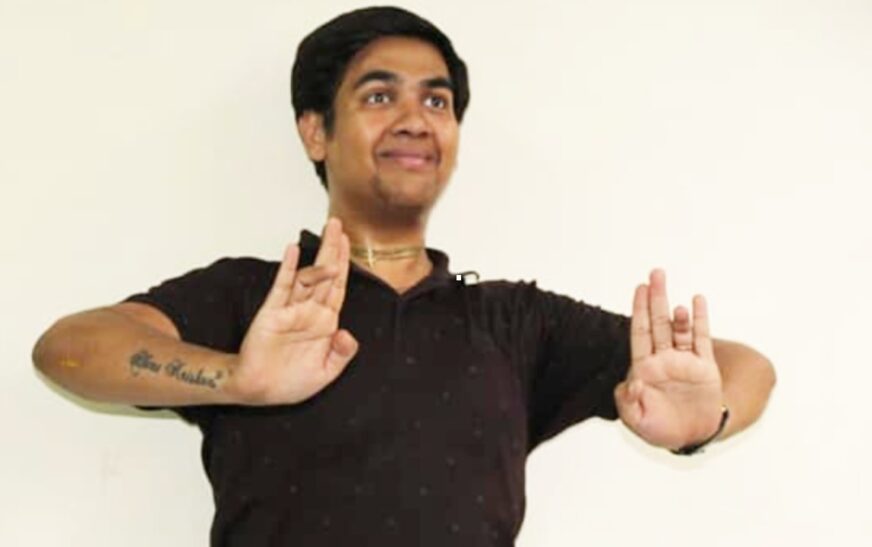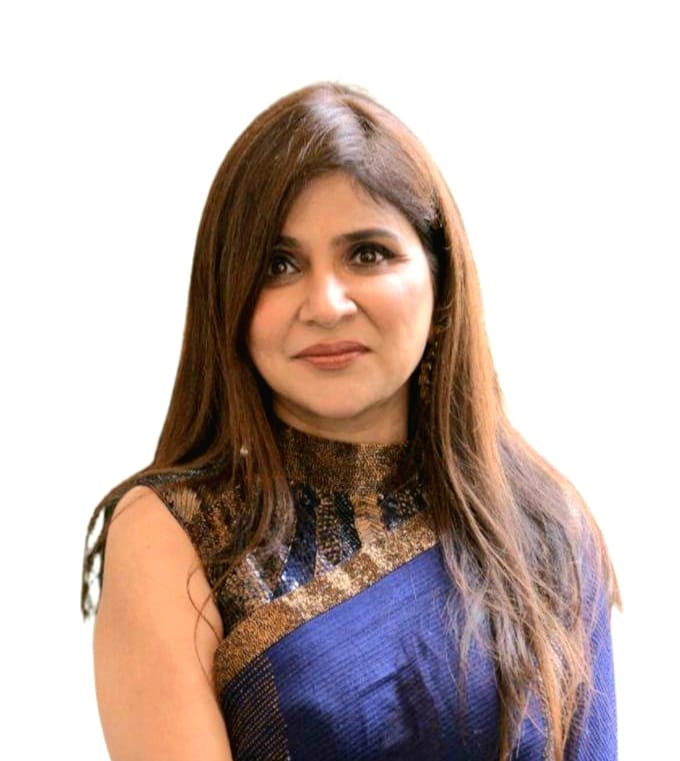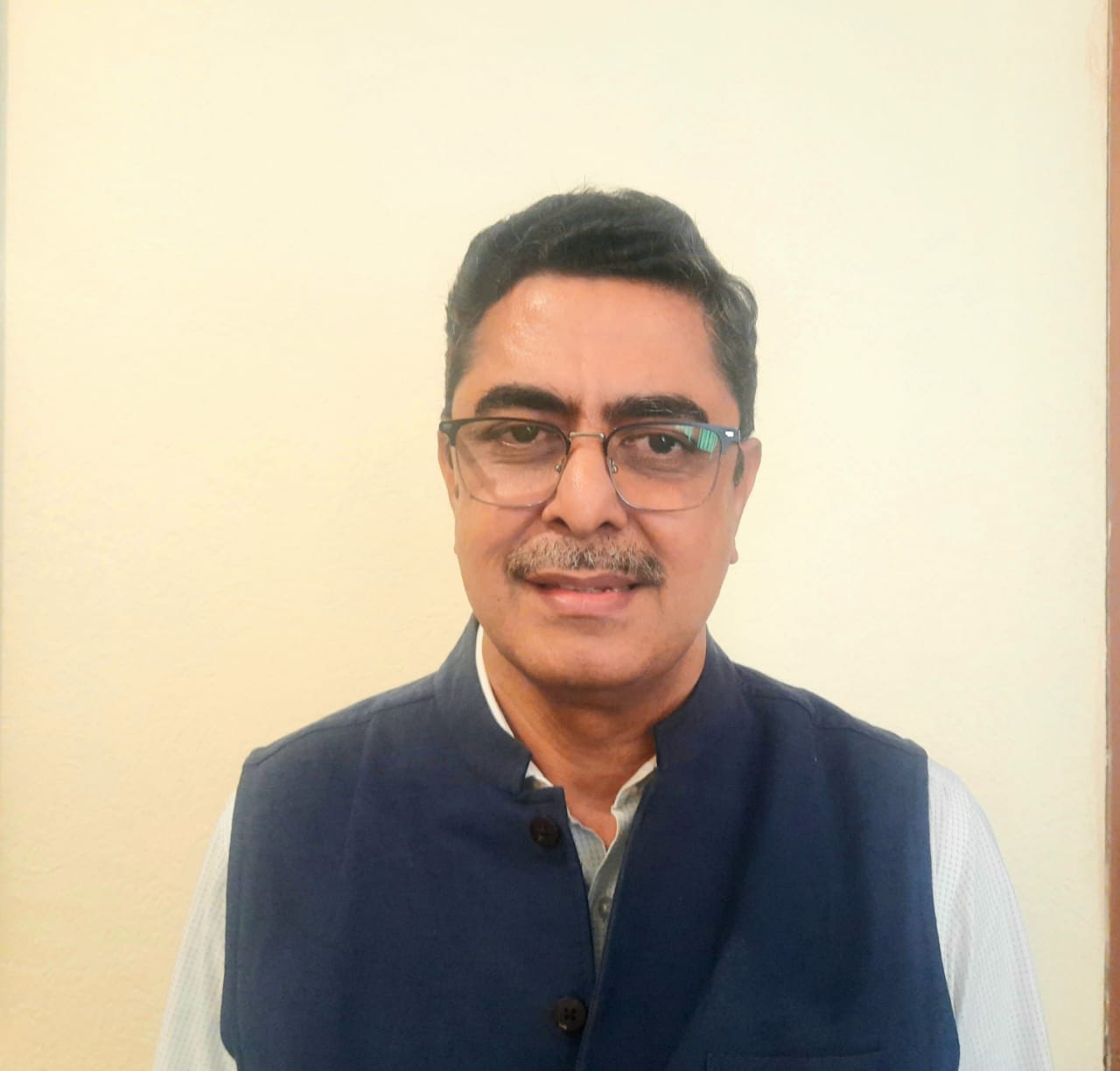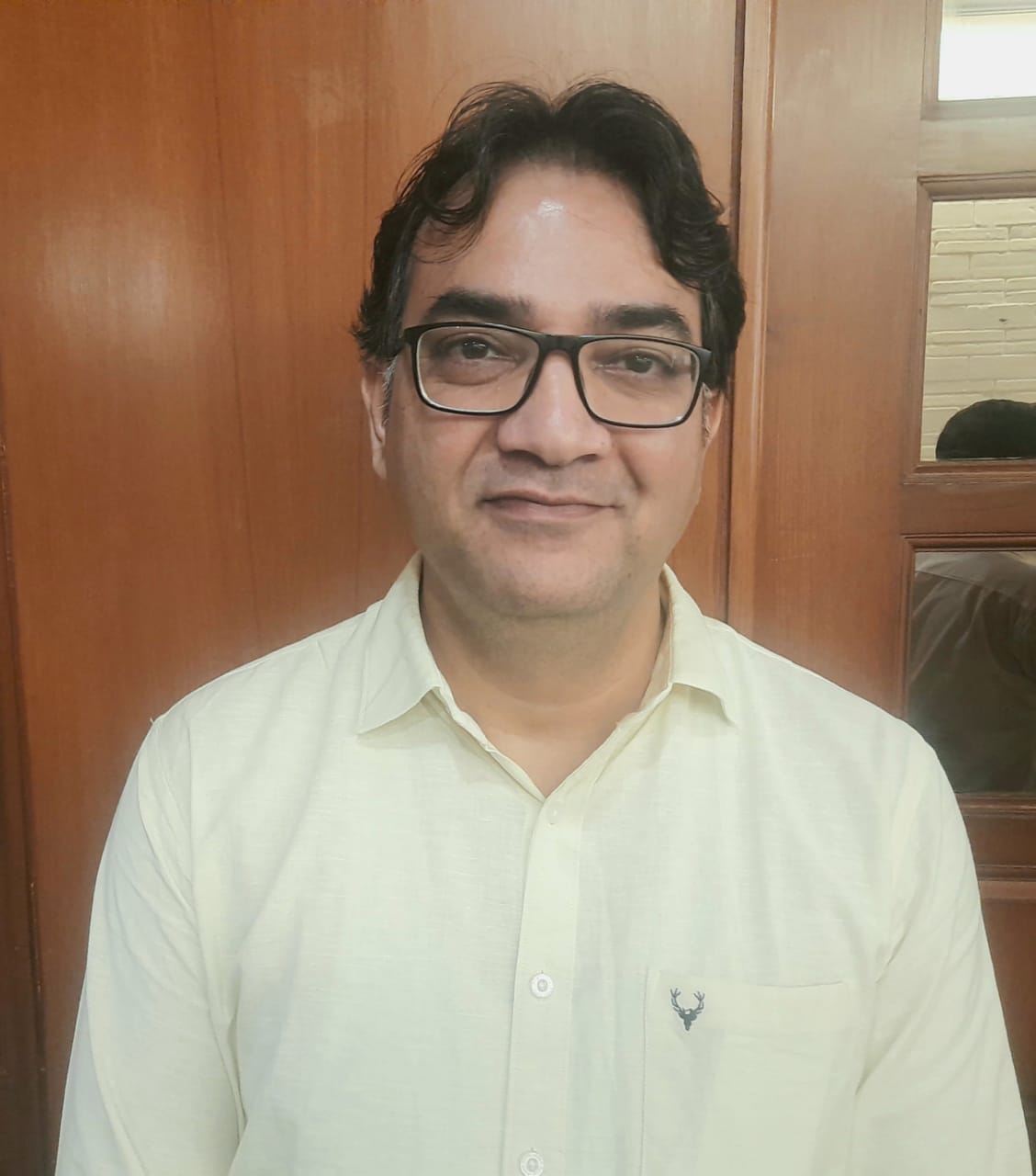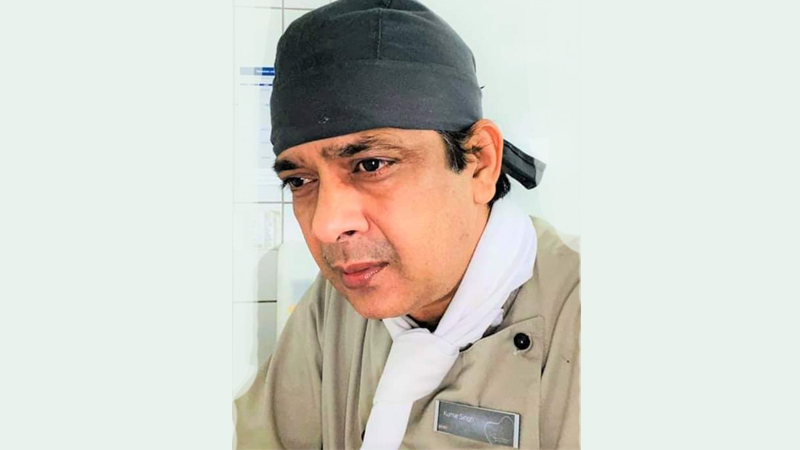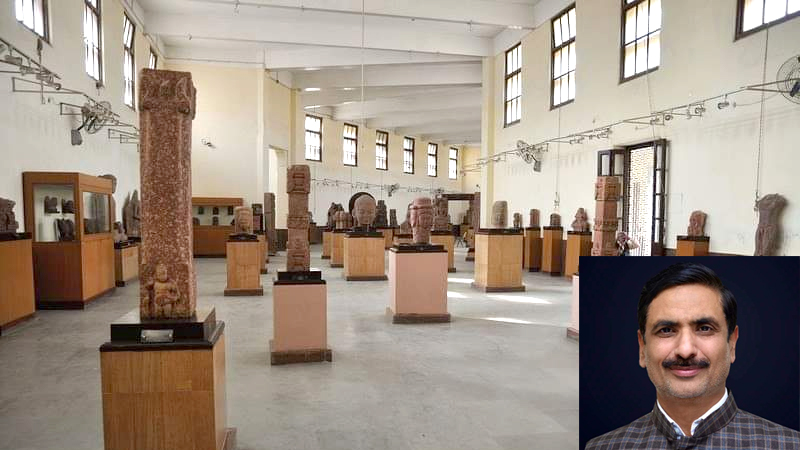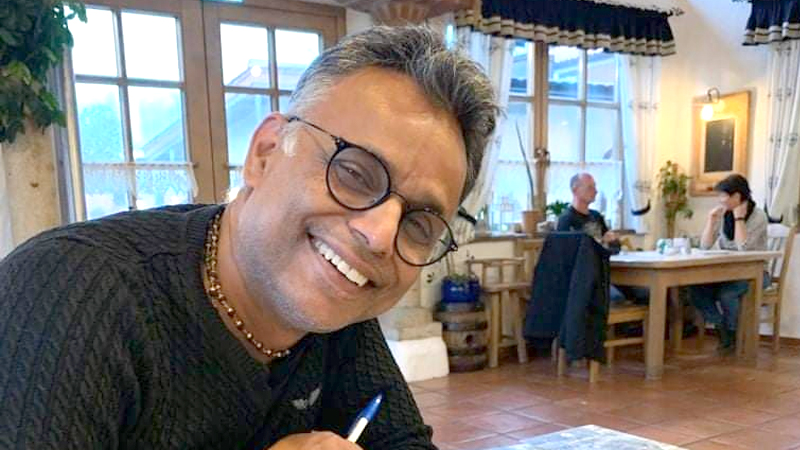Rahul Gupta, an eminent proponent of classical dance hailing from Chandigarh, India, has embarked on a new chapter in Dubai, propelled by his unrelenting passion for the art. His odyssey, however, has been anything but facile. Yet, through every tribulation, his parents stood as his unwavering bastions of support. Not only did they foster his artistic inclinations, but they also meticulously orchestrated opportunities for him to hone his craft and showcase his prowess on prestigious stages.
The road to artistic fulfilment, however, was strewn with societal censure. Relatives, tethered to conventional paradigms, derided his vocation, insisting he traverse the trodden paths of medicine, engineering, or commerce. Yet, his soul was inexorably entwined with rhythm and movement. Bolstered by his parents’ steadfast encouragement, he chose to eschew the prosaic and embrace his true calling. Against a tempest of scepticism and deterrence, he persevered—undaunted, indefatigable. Today, the very naysayers who once impugned his choices now begrudgingly concede the legitimacy of his pursuits.
Presently, Rahul flourishes as a distinguished dance educator and choreographer at The Millennium School in Dubai. Beyond his pedagogical endeavours, he helms Nritya Kalalayam, his own sanctum of dance, where he has been inculcating the finesse of Bharatnatyam alongside a plethora of Western and Indian dance forms for over a decade and a half.
In an exclusive dialogue with The Interview World, Rahul Gupta elucidates the inspirations that galvanized his artistic journey, articulates his grand vision for Nritya Kalalayam, and underscores his unwavering commitment to making dance accessible to the differently-abled. He further dissects the formidable challenges of training students in both classical and contemporary forms, examines the transformative role of social media in proliferating dance, and imparts an eloquent exhortation to aspiring dancers. Herein lie the key takeaways from his riveting discourse.

Q: You have been teaching Bharatnatyam and multiple dance forms for 14 years. What inspired you to pursue dance as a career, and how has your journey evolved over the years?
A: My journey in dance commenced at an early age, ignited by an abiding reverence for the profound expressive power of movement and the art of storytelling. Despite the societal prejudices that often diminish the stature of male classical dancers, my ardour for Bharatnatyam and other dance forms has only intensified over time. Through the years, I have been fortunate to receive guidance from distinguished mentors, which has allowed me to evolve both as a performer and a teacher. The act of teaching has not only honed my craft but has also granted me the privilege of transmitting this exquisite art form to future generations. It has been a journey replete with both formidable challenges and immeasurable fulfilment, one that has sculpted me into the artist I am today.
Q: Nritya Kalalayam has been a platform for many dancers. What is your vision for the academy, and how do you approach training students of diverse age groups and abilities?
A: My vision for Nritya Kalalayam is to cultivate an inclusive sanctuary where dance evolves beyond the confines of mere physical movement, becoming an eloquent medium for self-expression and the preservation of our cultural heritage. I am firmly of the conviction that dance should be a universal pursuit, accessible to all, irrespective of age or ability. My approach to instruction is deeply individualized—I meticulously assess each student’s unique strengths, interests, and challenges, crafting a learning environment that is both structured and fluid. By harmonizing the timeless elegance of traditional techniques with the dynamism of contemporary pedagogy, I ensure that every student embarks on a journey that melds discipline with delight, enriching their connection to the art form.
Q: Winning the first prize at ‘Salaam-e-Nusrat Night’ and receiving the award from the Late CM of Delhi Sheila Dixit must have been an unforgettable moment. Can you share your experience and what that recognition meant to you?
A: Receiving the first prize at Salaam-e-Nusrat Night and being honored by the late Chief Minister Sheila Dixit was an experience both profound and humbling. That singular moment served to reinforce my unshakable conviction in the unparalleled power of dedication and perseverance. It transcended the mere act of receiving an award—it was, in essence, a recognition of countless years devoted to hard work and an unwavering passion for the art of dance. The event also afforded a unique platform to unveil the rich tapestry of classical and fusion dance to a discerning, broader audience. This honor has since acted as a catalyst, propelling me to transcend my artistic limitations and contribute ever more meaningfully to the vibrant dance community.
Q: You have worked extensively with differently-abled students. How do you adapt dance training to make it more accessible and inclusive?
A: I am an unwavering proponent of inclusivity within the realm of dance. When engaging with differently-abled students, my focus lies in discerning their distinctive capabilities, rather than fixating on perceived limitations. I adapt techniques accordingly, weaving in expressive hand gestures (mudras) and enriching the learning experience with elements of storytelling, thereby ensuring both accessibility and engagement. Additionally, I place significant emphasis on rhythm and body awareness, tailoring these to the individual’s comfort, so that they may fully partake in the unadulterated joy of movement, unfettered by barriers. For, at its core, dance is an art of expression, and it is my unwavering commitment to render that expression accessible to all.

Q: What challenges do you face in training students in both classical and contemporary dance forms, and how do you keep them engaged and motivated?
A: One of the most formidable challenges lies in reconciling the timeless elegance of tradition with the dynamic pulse of modernity. While many students are initially captivated by the allure of contemporary styles, with their widespread appeal, I make it a point to instil an appreciation for the profound depth and rigorous discipline of classical dance. I accomplish this by drawing insightful parallels between the two forms, illustrating how classical techniques underpin and enrich many contemporary movements. True engagement, I contend, is born of innovation. To sustain it, I weave together interactive storytelling, inventive choreography, and the real-world applications of dance, ensuring that my students remain both inspired and driven.
Q: With digital platforms transforming the performing arts, how do you see the role of traditional dance evolving in today’s social media-driven world?
A: Digital platforms have radically expanded the reach of traditional dance, offering artists the unparalleled opportunity to showcase their work to a global audience. Yet, therein lies the delicate task of preserving authenticity while adapting to the ever-evolving digital landscape. While social media undoubtedly serves to popularize dance, it often prioritizes ephemeral, visually appealing snippets at the expense of the profound, disciplined training that underpins the art. I firmly believe that the role of traditional dance in this digital era is to leverage these platforms to gain greater visibility, all the while remaining steadfast in its true essence. Through carefully curated digital workshops, online collaborations, and educational content, we can ensure that classical dance not only endures but flourishes amidst the complexities of the contemporary world.
Q: You participated in Dance India Dance, one of the most popular dance reality shows. How did that experience impact your career, and what did you learn from it?
A: Being a part of Dance India Dance was, without exaggeration, a transformative odyssey. It afforded me invaluable exposure to an array of diverse dance forms, introduced me to industry stalwarts, and immersed me in an environment that was simultaneously fiercely competitive and deeply enriching. The platform indelibly underscored the paramount importance of versatility, discipline, and adaptability within the ever-evolving dance industry. Beyond this, it deepened my appreciation for the technical nuances of stage performance—from choreography to the subtleties of camera angles. This experience catalysed my growth, not merely as a performer, but as a mentor, profoundly shaping my approach to both teaching and choreography.
Q: What advice would you give to aspiring dancers who want to pursue a professional career, especially in both classical and contemporary dance forms?
A: My counsel to aspiring dancers is unequivocal: establish an unwavering foundation in classical techniques, for they form the very cornerstone of all dance forms. Consistency, patience, and dedication are non-negotiable—there are no shortcuts to mastery in this art. It is equally vital to remain receptive to learning, to explore, and to experiment with a myriad of styles. In this digital era, dancers must also expand their repertoire beyond mere performance, honing skills in choreography, teaching, and content creation to craft a career that endures. Above all, dance must emanate from a place of unbridled passion; when you perform with authenticity and from the heart, your movement will resonate deeply with the audience.


